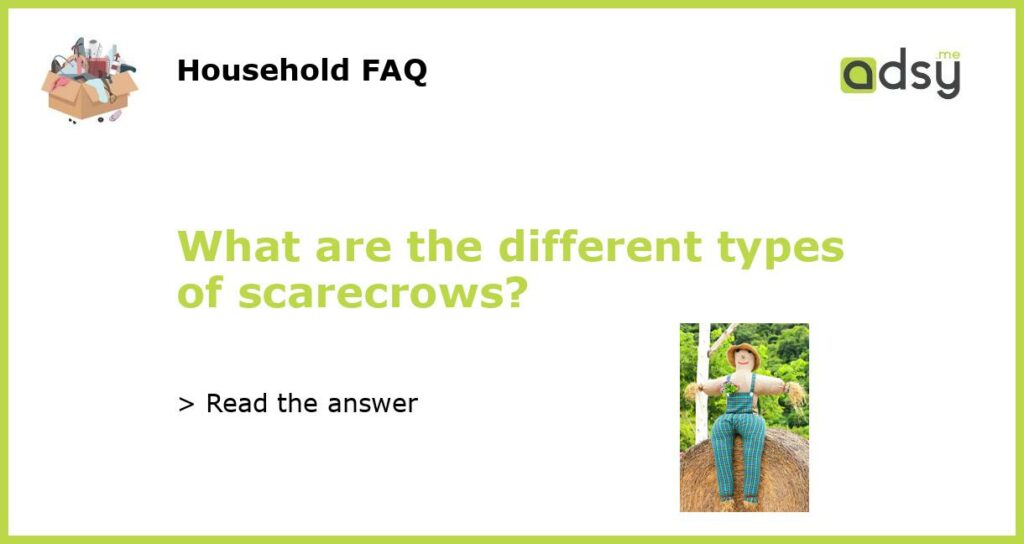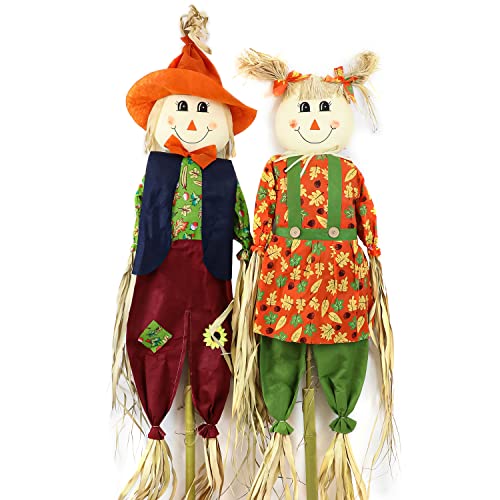The Different Types of Scarecrows
Scarecrows have been a staple in farming for centuries. They are designed to scare away birds and other animals from crops, preventing damage and loss. Over time, scarecrows have evolved into more than just functional tools – they have become symbols of the harvest season and are often seen as decorations in gardens and fields. There are several different types of scarecrows, each with their own unique design and purpose.
Traditional Scarecrows
Traditional scarecrows are the ones most commonly depicted in stories and movies. These scarecrows are made from old clothes stuffed with straw or hay, with a cloth or burlap sack for a head. They are often given a hat or bonnet to complete the look. Traditional scarecrows are meant to resemble humans and are believed to be more effective in scaring away birds and animals.
While traditional scarecrows are not as commonly used in modern farming practices, they remain popular as decorations during the harvest season. Many people enjoy using traditional scarecrows in their gardens or fields to create a festive atmosphere and add a touch of nostalgia.
Modern Scarecrows
In recent years, modern scarecrows have become more popular. These scarecrows are often made from materials such as PVC pipes, wire frames, and synthetic fabrics. They have a more stylized and creative design compared to traditional scarecrows, making them visually appealing as decorative elements.
Modern scarecrows are often designed to match a specific theme or aesthetic. For example, a modern scarecrow may be dressed as a superhero, a character from a movie, or a notable historical figure. These scarecrows are commonly used in fall festivals, corn mazes, and other seasonal events.
Mechanical Scarecrows
Mechanical scarecrows take scarecrow design to the next level. These scarecrows are equipped with motion sensors and other mechanisms that make them more dynamic and engaging. They may have moving parts, sound effects, or even the ability to release bursts of air or water to startle birds and animals.
Mechanical scarecrows are often used in larger farming operations where a more high-tech and efficient solution is required. They can be programmed to move at specific intervals or respond to the presence of birds and animals, making them highly effective at keeping pests away from crops.
Social Scarecrows
Social scarecrows are a relatively new type of scarecrow that combines the traditional concept with modern technology. These scarecrows are equipped with speakers and sensors that can detect the presence of birds and animals. When triggered, the scarecrow plays sounds or voices that mimic human activity, such as talking, singing, or clapping.
The idea behind social scarecrows is to create the illusion of human presence in the field, which can be more effective at deterring birds and animals compared to static scarecrows. They are also being used as part of research studies to explore the potential for scarecrows to communicate with or influence the behavior of pests.
Veggie-Crow
A relatively new type of scarecrow gaining popularity is the “veggie-crow.” These scarecrows are made from recycled or biodegradable materials and are designed to blend into the garden rather than scare away pests. They are often adorned with vegetables or other plants and serve as a decorative element while also benefiting the garden.
Veggie-crows can help attract beneficial insects, such as pollinators, to the garden while also deterring pests. They can be made from materials like bamboo, twigs, or even dried plant stalks. Veggie-crows are not as commonly used in large-scale farming operations, but they are a popular choice for home gardeners looking for a more sustainable and eco-friendly option.






